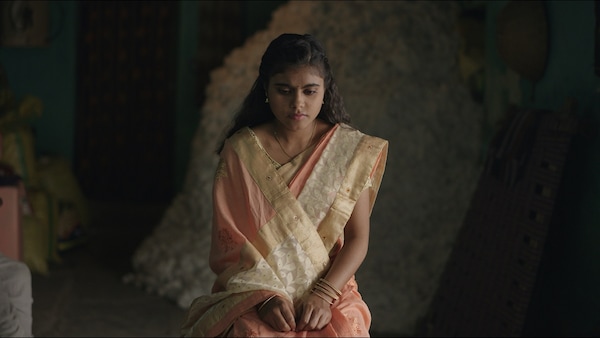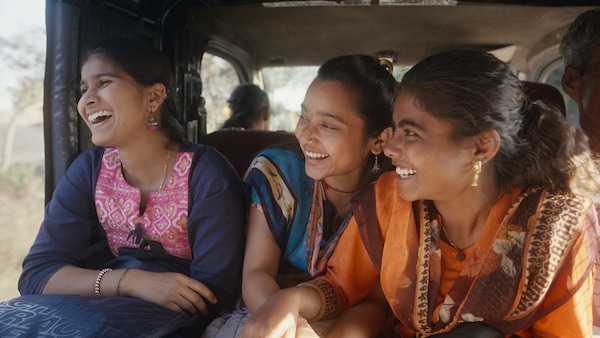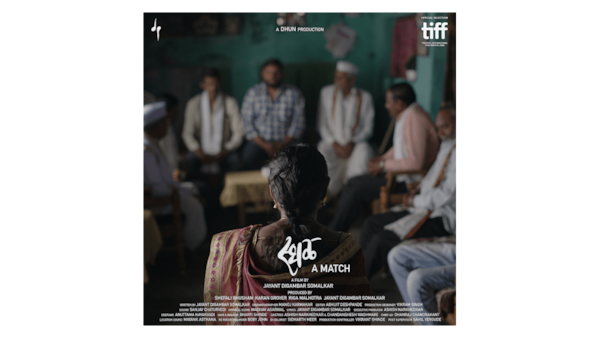At TIFF 2023, Marathi Film 'Sthal' Conducts A Thoughtful Interrogation Of Marriage & Womanhood In 'New India'
Sthal is an impassioned look at the travails of a woman stuck in modern India that is suffocated by a custom that shows no signs of going away — arranged marriage. Aditya Shrikrishna writes.

Last Updated: 02.16 PM, Sep 17, 2023
SPACE is important in Jayant Digambar Somalkar’s Marathi debut feature Sthal (A Match). Savita (Nandini Chikte), from Dongargaon, is in the final year of her Bachelor’s in Sociology. Her safe haven is a cabin within her college library. The enclosure is bookended by pictures of Ambedkar and Savitribai Phule, and the newspaper in front opens the outside world to her. At home, the claustrophobic living room is a space of confinement. It’s where she is forced to gloss herself up and sit in front of suitors for her marriage and their family, all men, and answer a laundry list of questions asked in the same tone and order. After a point Somalkar keeps only the voiceover, Savita in the frame doesn’t even speak. They come and go, an event that is choreographed like a set piece, a cycle with the same start and end every time. In the beginning, over the opening credits, the men are faceless with cloth covering them and a song sung with enthusiastic, obvious glee lists the qualities and chores expected of a wife. Somalkar adds a thin layer of comedy over the oceanic depths of oppression that is patriarchy.
Sthal, also written by Somalkar and consisting of non-actors, premiered at the ongoing 48th Toronto International Film Festival. It is an impassioned look at the travails of a woman stuck in modern India that is suffocated by a custom that shows no signs of going away — arranged marriage. Somalkar’s focus is on Savita but in her story lie the several micro stories of characters who either play a part in controlling her life or are indirectly affected by her fortunes. Like her elder brother Mangesh is waiting for her to be married off so that he can propose to his lover, lest his life come in the way of her marital bliss. So conditioned into the system, for him, Savita’s prospects in what is essentially a market look like a bigger roadblock than his own unemployment and bleak future.
A young aspirational India is the fulcrum around which Sthal peppers its ideas and conflicts. The father might be a farmer, but the next generation owns smartphones, flirts through WhatsApp and takes advantage of systemic corruption to get themselves out of agrarian life. “Who will marry a farmer these days?” is uttered directly and indirectly in the film. It’s also an India where celebrity weddings are romanticised, commercialised and marketed. One of Savita’s friends is browsing these photos and among the images of movie stars in their wedding finery is a photoshopped image of the friend and her lover. Sthal establishes that Made in Heaven might be on the streaming space about a different India but the business of weddings and arranged marriage cuts across caste and class.

Savita is also part of this India with her eye towards public services and preparing for her MPSC exams to gain that foothold. Sthal surprises us at every turn — the tone shifts in the classroom when we notice a spark between the young lecturer and Savita, even acknowledged by the students. Somalkar, folksy and static so far, goes for slow motion and violins, to underline this spark. Does she indeed see marriage in her immediate future? The film says she, like any woman, contains multitudes. She veers away from her friends who are shopping for bangles, and we suspect she is going to meet the lecturer but their brief, harmless encounters are confined to college. She goes to buy material to prepare for the MPSC exam.
The film revolves around limited spaces within Dongargaon. The college, the common street that runs through the village, the shared transport Savita and her friends use to commute to college and the tiny room in her house that is also the bedroom, the room for guests and the space for cotton. Cotton is the means for both income and small talk. Before Savita can be interrogated, cotton prices are the main point of discussion. Savita’s seating in front of the guests disturbs not just the symmetry of the blocking but also displays the cotton left to be sold. It’s an intentional juxtaposition, the commodity that is traded for the family’s livelihood sits just a few inches behind Savita, a living, breathing person treated like property, everyone in the household enthused in the effort to export her to another family.

Just like how details in this system are in the things left unsaid, Sthal too says a lot in its silence and absence. Like an elder daughter gets a mention and no more. The textbook definition of “women empowerment” guides the film all along, a definition that’s taught to Savita but not provided as a tool. There are instances where Sthal comes across as heavy handed — when it rests on an image and a slogan, not trusting the weight of the moment enough. But it is largely successful in delineating the intersectionality of issues that underscores the arranged marriage system and the young women who suffer from it, not to mention some men and whole families.

